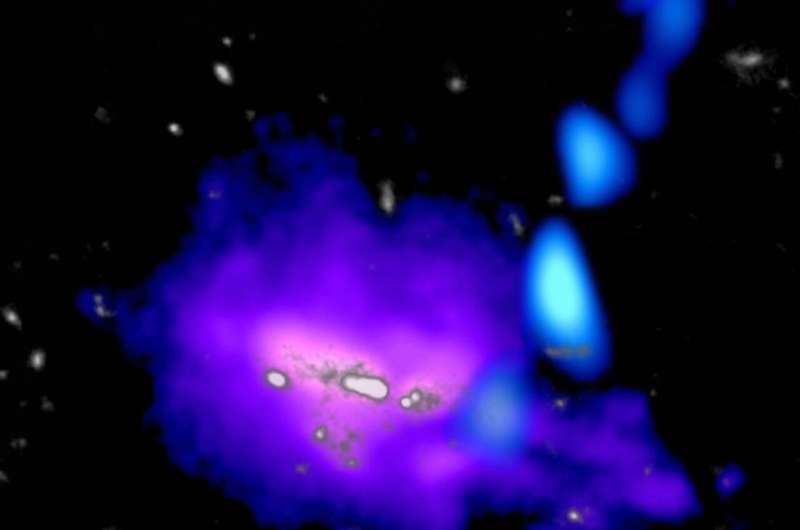March 31, 2023 report
This article has been reviewed according to Science X's editorial process and policies. Editors have highlighted the following attributes while ensuring the content's credibility:
fact-checked
peer-reviewed publication
trusted source
proofread
'Cold stream' of molecular gas outside a galaxy observed, confirming theories of star formation

An international team of space scientists has observed a "cold stream" of molecular gas outside of a galaxy, confirming theories of star formation within galaxies. In their study, published in the journal Science, the group used the array of radio telescopes at the Atacama Large Millimeter Array (ALMA) to focus on the stream and learn more about its nature. Caitlin Casey, an astronomer at the University of Texas, has published a Perspective piece on the work done by the team in the same journal issue.
For many years, space scientists have suggested that cold streams of gases form in space and sometimes fall into galaxies, where they feed the formation of stars. But proving such theories to be true has been difficult due to the cold nature of such streams—they have very low resolution. Also, their large size makes zooming in to see them difficult. Still, despite these obstacles, the team on this new effort found evidence of such a stream feeding a galaxy called 4C 41.17.
To find the stream, the research team had to pull the array of radio satellites at ALMA together as closely as possible. This allowed for viewing the stars in the stream while still observing the stream as a whole. They were able to measure its length at a half-million light years. The researchers believe that the stream is made mostly of carbon, though they were not able to confirm its makeup, nor its source. What they could see was that the stream was falling into the galaxy, just as theories had predicted.
The researchers plan to continue study of the stream by returning to ALMA, and also perhaps through use of the Very Large Array in New Mexico, hoping to find carbon monoxide in the stream, which has also been theorized. They also hope to find more characteristics of the stream that could help in finding others of its kind. And they plan to study the physics involved in accretion leading to the creation of stars inside of galaxies.
More information: Bjorn H. C. Emonts, A cosmic stream of atomic carbon gas connected to a massive radio galaxy at redshift 3.8, Science (2023). DOI: 10.1126/science.abh2150. www.science.org/doi/10.1126/science.abh2150
Caitlin M. Casey, Streams of cold cosmic fuel for the galaxies, Science (2023). DOI: 10.1126/science.adh1663. www.science.org/doi/10.1126/science.adh1663
Journal information: Science
© 2023 Science X Network



















